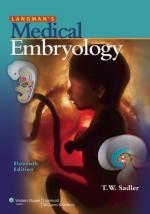|
This section contains 1,778 words (approx. 6 pages at 300 words per page) |

|
Overview
At the beginning of the twentieth century, embryologists, following the principles established by Wilhelm Roux (1850-1924) and Hans Adolf Eduard Driesch (1867-1941), were actively investigating the question of how factors intrinsic or extrinsic to an egg could govern the development of the embryo. Hans Spemann (1869-1941) refined the techniques of experimental embryology and carried out systematic studies of embryonic development. The "organizer experiment," performed by Spemann's doctoral student, Hilde Mangold, demonstrated that, when the embryonic region known as the dorsal lip was grafted onto a host embryo, it induced the formation of a new embryo. Moreover, the secondary embryo was composed of a mosaic of cells from the host and the donor. The dorsal lip region was, therefore, called the "organizer region."
Background
Wilhelm Roux, who saw himself as the founder of a new discipline that he called "developmental mechanics," argued that embryologists...
|
This section contains 1,778 words (approx. 6 pages at 300 words per page) |

|


